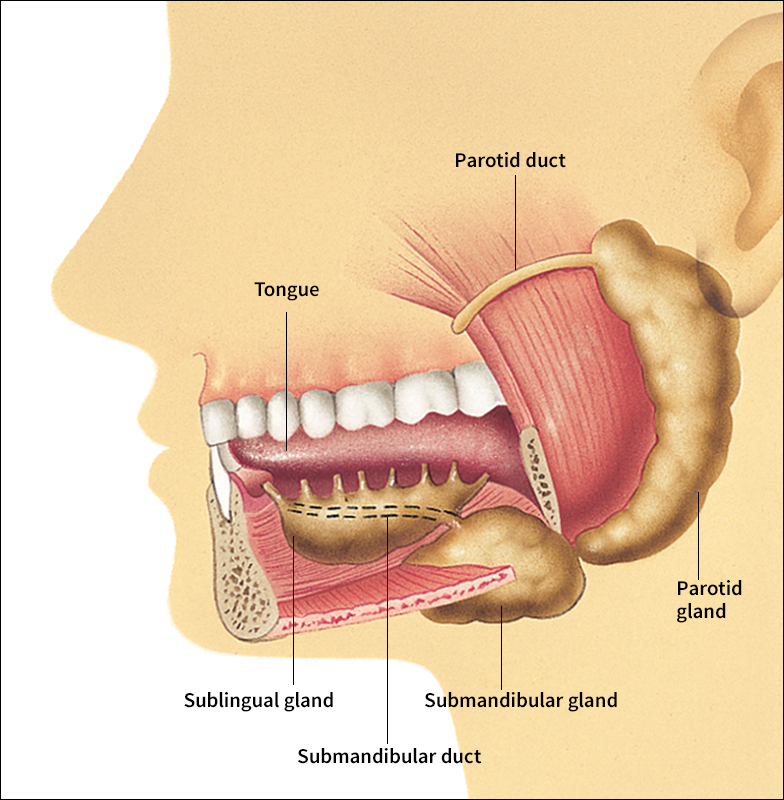Saliva, a sticky fluid produced in the mouth, is important to the digestion of food. It has a colorless and watery appearance. It contains some mucus and produces an alkaline (acid-neutralizing) chemical action. Saliva contains an enzyme called amylase. Amylase changes starches into such simpler substances as maltose.

Saliva moistens and softens all food that is taken into the mouth. It helps in the chewing and swallowing of food. It also keeps the mouth moist, which is important to comfort. Its most important action is on starchy foods. Saliva breaks down all starches into maltose, the first step in digestion.
Three pairs of glands in the mouth and cheeks, known as the main salivary glands, produce saliva. One pair of glands, the parotid, is located in front of the ears. Another pair, the submandibular, is located under the lower jaw. The third pair of glands is located under the tongue and is known as the sublingual. There are as many as 1,000 smaller glands in the mucous membrane of the mouth that also aid in producing saliva.
